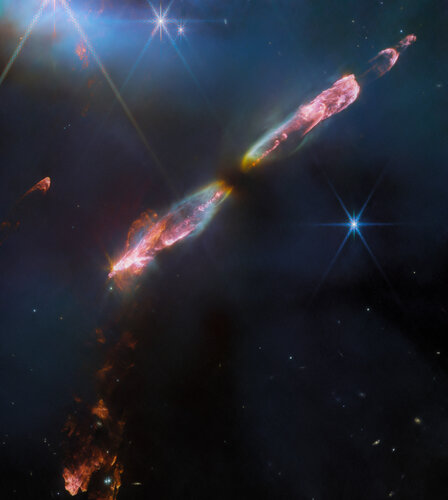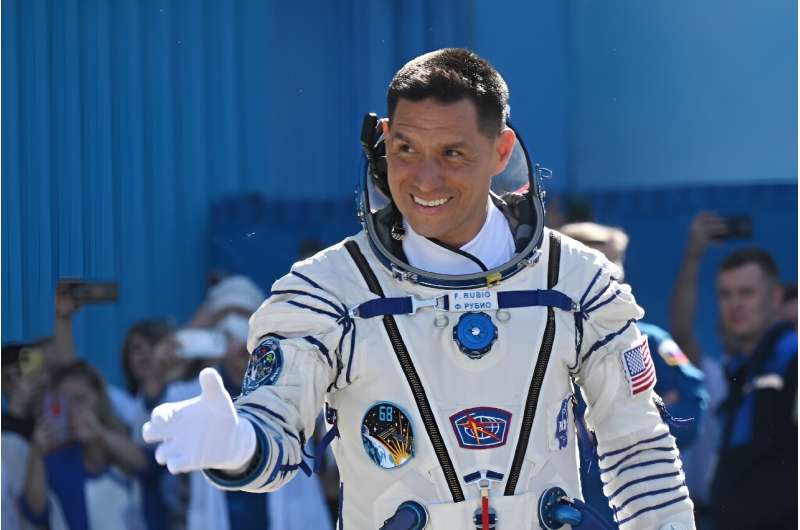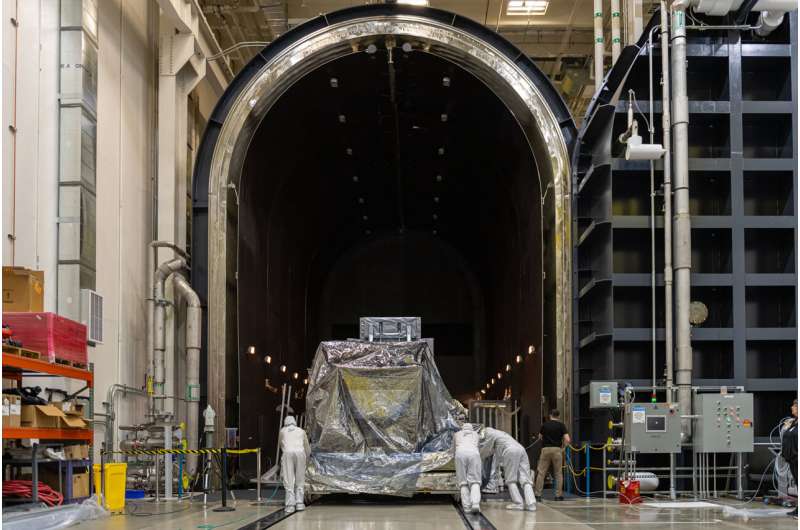
Copernical Team
Webb snaps supersonic outflow of young star
 Image:
HH 211 (NIRCam image)
Image:
HH 211 (NIRCam image) Sentinel-1 reveals shifts from Morocco earthquake

Following the devastating earthquake that struck Morocco on 8 September, satellite data have been made available through the International Charter ‘Space and Major Disasters’ to help emergency response teams on the ground.
In addition, radar measurements from Europe’s Copernicus Sentinel-1 satellite mission are being used to analyse how the ground has shifted as a result of the quake, which will not only help in planning the eventual reconstruction but will also further scientific research.
ESA empowering retailers with exclusive B2B access

ESA is providing retailers with an exclusive opportunity to supply official ESA products through a new B2B platform.
Maduro says to send first Venezuelan to the Moon 'soon'

Venezuelan President Nicolas Maduro has said his country could soon send its first astronauts to the Moon in a Chinese spacecraft, hailing Thursday a scientific cooperation agreement reached with President Xi Jinping.
Maduro arrived in Beijing on Tuesday after a tour of Shanghai and other Chinese cities, meeting Xi on Wednesday and agreeing to "upgrade" ties with Beijing.
Maduro announced during his meeting with Xi on Wednesday that the two countries had agreed to train young Venezuelan astronauts in China, with plans to eventually send them to the Moon.
A special task team "on scientific, technological, industrial and aerospace cooperation will sooner rather than later (send) the first Venezuelan man and woman to the moon in a Chinese spacecraft", Maduro said.
"Very soon, Venezuelan youth will come here to prepare as astronauts in Chinese schools," he said.
NASA to publish long-awaited UFO report

NASA is set to release on Thursday the findings of a long-awaited study on unexplained flying objects in Earth's skies.
The US space agency announced last year it was reviewing evidence regarding unidentified anomalous phenomena, or UAPs—which has replaced the term "UFO" in official parlance.
The subject has long fascinated the public but was shunned by mainstream science.
An independent team of 16 researchers shared their preliminary observations in May, finding that existing data and eyewitness reports are insufficient to draw firm conclusions, while calling for more systematic collection of high-quality data.
It's unlikely Thursday's report will change that bottom line—but it could eventually usher in the start of a new mission for the agency.
US astronaut sets record for stint in space

The astronaut Frank Rubio broke the record for the longest in orbit mission by an American, spending more than 355 days aboard the International Space Station.
"In some ways, it's been an incredible challenge. But in other ways, it's been an incredible blessing," Rubio said Wednesday from the ISS during a chat with NASA that was broadcast live.
Having broken the old record Monday, Rubio said he was now looking forward to reaching 365 days.
Primary instrument for NASA's Roman completed, begins tests

A team of engineers and technicians at Ball Aerospace, one of the industry partners for NASA's Nancy Grace Roman Space Telescope, and NASA's Goddard Space Flight Center in Greenbelt, Maryland, has finished assembling the spacecraft's giant camera. Called the Wide Field Instrument (WFI), this state-of-the-art tool will enable astronomers to explore the cosmos from the outskirts of our solar system to the edge of the observable universe.
"The year-long integration effort culminates in the instrument's first baseline performance testing, where we turn on the instrument to ensure it's working as expected," said Mary Walker, Roman's WFI instrument manager at Goddard.
Mini space thruster that runs on water
 Image:
Mini space thruster that runs on water
Image:
Mini space thruster that runs on water Showcase your climate data visualisation talent

Are you a creative visionary with a passion for climate action? Enter ESA’s latest competition to showcase your talent by transforming decades of satellite climate data into impactful visuals to help bridge the gap between climate science, policy makers and the wider public. The winner will have the unique opportunity to display their data visualisation at the 2023 United Nations Climate Change Conference (COP28) taking place later this year.
Researchers discover quantum switch for regulating photosynthesis
 Photosynthesis is a crucial process that allows plants to convert carbon dioxide into organic compounds using solar energy. Light-harvesting complex II (LHCII) is a complex of pigment molecules bound to proteins. It switches between two main functions-dissipating harmful excess light energy as heat under high light intensity through nonphotochemical quenching, and transferring absorbed light to
Photosynthesis is a crucial process that allows plants to convert carbon dioxide into organic compounds using solar energy. Light-harvesting complex II (LHCII) is a complex of pigment molecules bound to proteins. It switches between two main functions-dissipating harmful excess light energy as heat under high light intensity through nonphotochemical quenching, and transferring absorbed light to 
